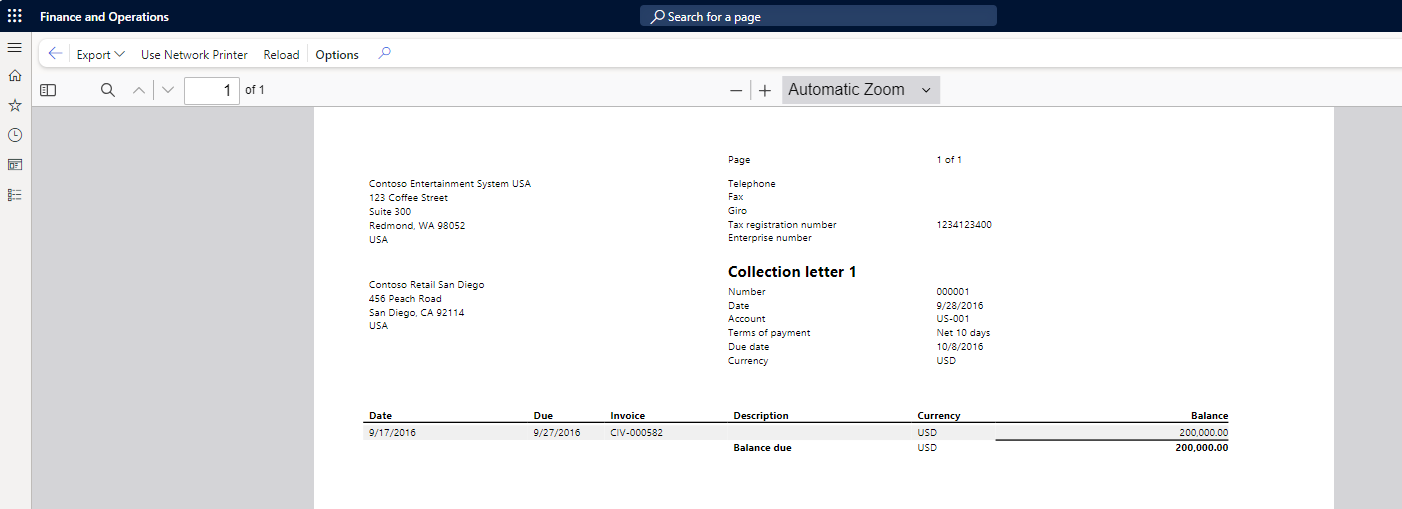Manage customer credit and collections
As a person working in a collection department, the typical activities involved in processing credit and collections can be grouped into the following categories.
Process collection letters
Processing collection letters is simple. Create the collection letters, and then print, cancel, or post the collection letter notes.
Credit and collection parameters
On the Credit and collection parameters > Collections page, you can specify the Percentage of customers per batch task by expanding the Collections defaults FastTab. This indicates the percentage of customers per batch task when the aging snapshot is created.
The following screenshot shows collection letter 1 to customer US-001 Contoso Retail San Diego.
Working with cases and activities
Use Collections Cases to organize collections activities and transactions. For example, if you have to collect for three transactions, you can add them to a case, and then manage activities that are related to your collections work together on those three transactions.
When transactions or activities are grouped into a case, use the Case ID filter on the top pane to filter the list to only transactions and activities for a specified case. In addition, you can use the Collections cases list page to view a list of all cases. Drill down into the details by double-clicking a case in the list page.
Send an email message
From the Collections page, you can send an email message through Office Outlook or using the Finance web client. You can also automatically attach information about selected transactions or customer statements as a Microsoft Office Excel attachment.
Perform write-offs
You can write off bad debts by selecting Write off on the Credit and collections > Inquiries and reports > Write-off journals page, as well as they can be found on the All customers list page.
When you write off transactions for a customer, all transactions for the customer are automatically selected for settlement. The amount that is written off depends on the net amount of the selected transactions. The write-off transaction is created in a general journal and can contain up to three types of journal lines.
Write-off types
The first type of journal line contains the customer write-off entry. If the selected transactions contain multiple combinations of currency code, dimension, and posting profile, a separate journal line is created for each combination.
The second type of journal line contains the general ledger write-off entry. If the selected transactions contain multiple combinations of currency code, dimension, and posting profile, a separate journal line is created for each combination.
The third type of journal line contains the general ledger write-off information for sales taxes. This journal line is created only if the Separate sales tax check box is selected on the Accounts receivable parameters page. If the selected transactions contain multiple combinations of sales tax payable account, dimension, and sales tax code, a separate journal line is created for each combination.
Watch this video to learn how to process credit and collections:
